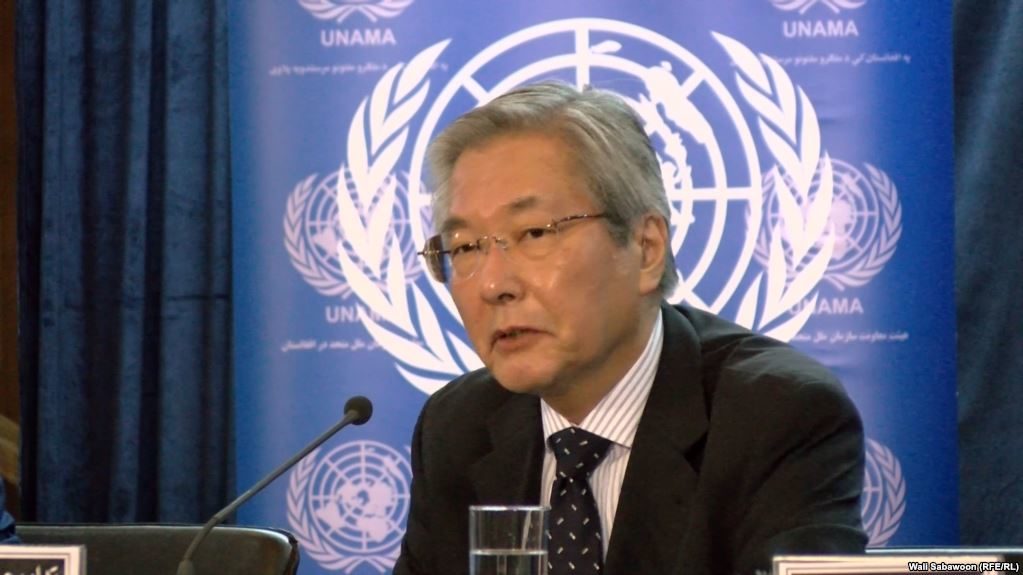
© Wall Sabawoon/ RFE/RLTadamichi Yamamoto heads the UN Assistance Mission in Afghanistan.
The number of civilians killed and wounded in conflict in Afghanistan in the first half of 2017 remains at the same record high level as last year, the United Nations mission in the country says.
A total of 1,662 civilian deaths were confirmed between January 1 and June 30, a 2 percent increase from the same period last year, the UN Assistance Mission in Afghanistan (UNAMA) says in a
report released on July 17.
"The human cost of this ugly war in Afghanistan -- loss of life, destruction and immense suffering -- is too far too high," said the UN Secretary-General's Special Representative for Afghanistan and head of UNAMA, Tadamichi Yamamoto.
The number of civilians wounded in the same period fell 1 percent to 3,581, the report says.
UNAMA highlights that 40 percent of all civilian casualties during the six months were caused by antigovernment forces using improvised explosive devices (IEDs), such as suicide bombs and pressure-plate devices -- or roadside bombs.The figures include civilian casualties from suicide attacks and "complex attacks" -- assaults involving more than one perpetrator and at least two forms of weaponry, including IEDs -- that saw a 15 percent increase compared to the same period last year.
The highest numbers of casualties occurred in provinces of Kabul, Helmand, Kandahar, Nangarhar, Uruzgan, Faryab, Herat, Laghman, Kunduz, and Farah.
At least 92 civilians were killed and nearly 500 others injured in a single attack in the capital, Kabul, on May 31. The truck bomb attack was the single deadliest incident documented by UNAMA since 2001.
Yamamoto called on antigovernment forces to immediately stop the use of IEDs.
The report urges antigovernment forces to stop targeting civilians, and also calls on government troops to stop using weapons, including mortars and rockets in civilian populated areas.
The report commends Afghan security forces for their continued efforts to reduce civilian casualties.
UNAMA annual reports indicate that civilian casualties were on the rise from the withdrawal of many international troops from Afghanistan after 2011 and the official end of NATO's combat mission in 2014.
Since January 2009, UN figures show that more than 26,500 civilians have died and just under 49,000 have been wounded in the Afghan conflict.The UN reports include only incidents that have been confirmed after a thorough verification process.

Reader Comments
to our Newsletter